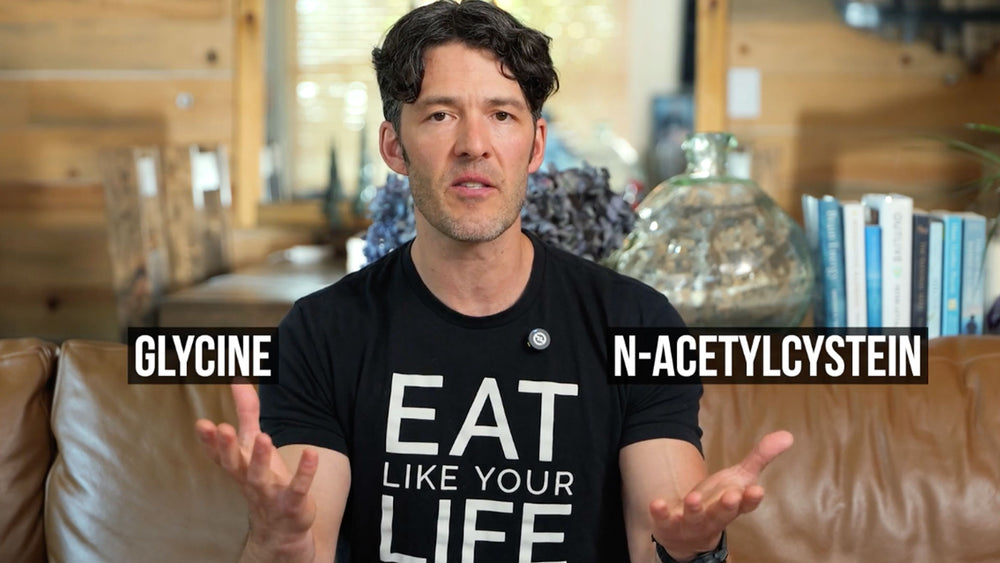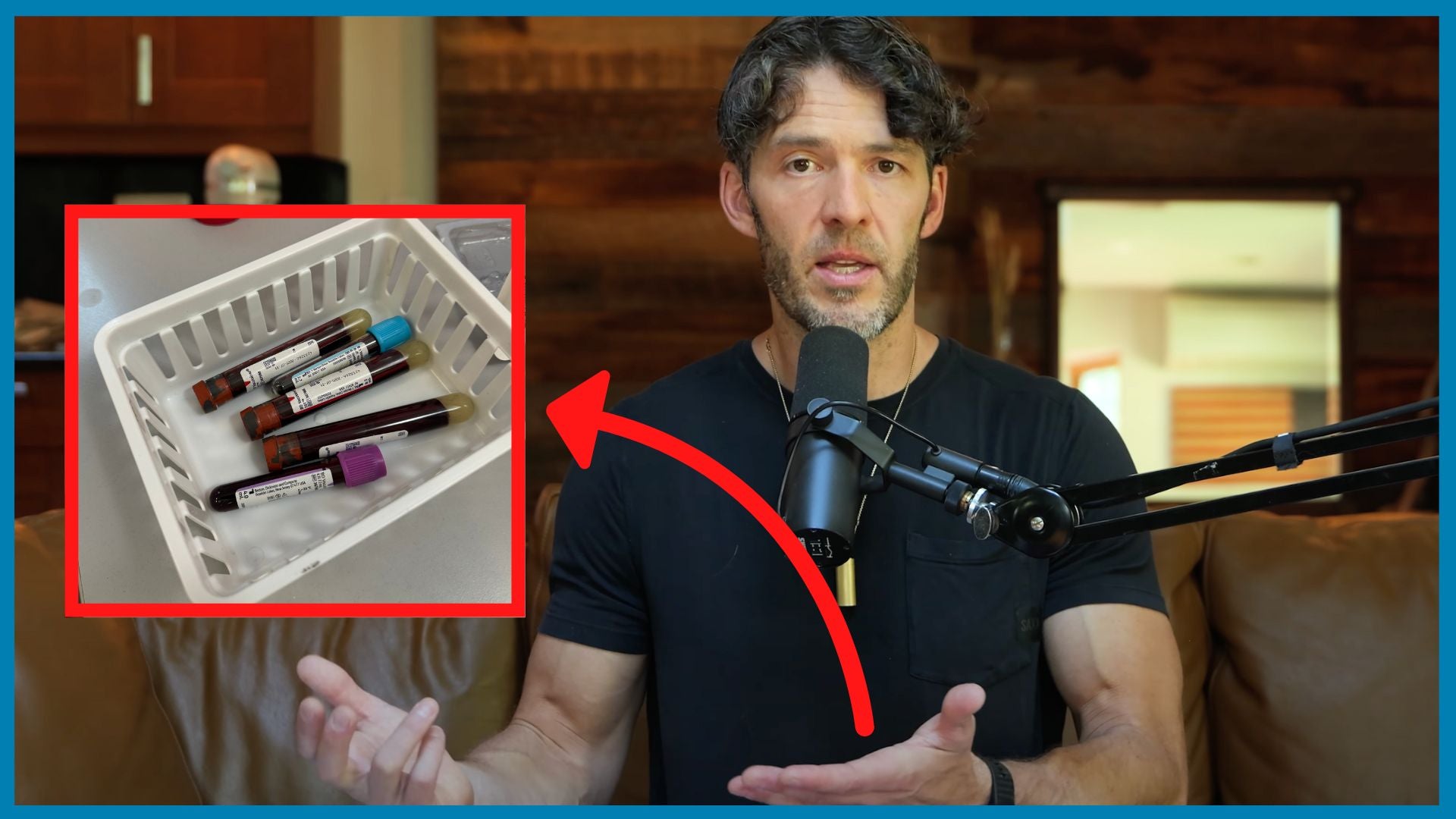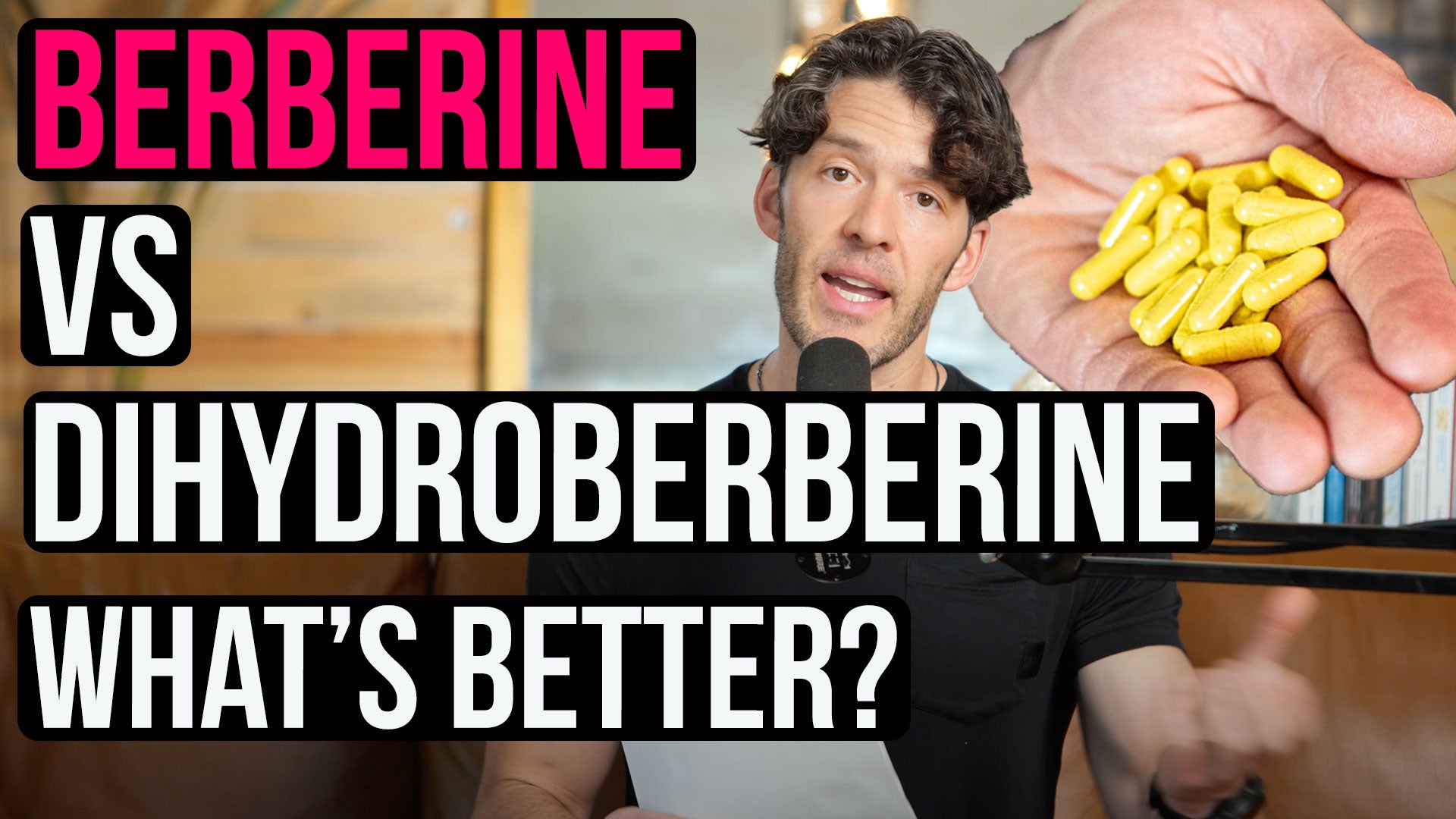Harnessing N-Acetylcysteine and Glycine to Boost Glutathione

As you likely know, glutathione (GSH) is your body's primary antioxidant and detoxification molecule. Studies show glutathione declines with age, but can be supported by supplementing with two amino acids: cysteine (AKA NAC) and glycine.
Scientists have recently discovered how this combination, known as GlyNAC (glycine plus N-acetylcysteine ), may be a novel nutritional approach to support healthy aging as well as improving key aging biomarkers, including*:
-Muscle strength and stem cells
-Exercise capacity
-Body composition
-Cognition and more
Related:
Support glutathione synthesis and detoxification of environmental pollutants* with NAC Glycine Supreme
Save 15% OFF with code insider15 through August 31st, 2024.
References:
Video Timestamps:
(00:00):
As you likely know, glutathione is your body's most abundant intracellular detoxification molecule as well as antioxidant. In today's show, we're going to talk about the importance of pairing N-acetylcysteine, which is a known glutathione precursor, along with glycine, which is a well-known rate-limiting amino acid to make the glutathione tripeptide. So just to back up so we're all on the same page, glutathione is comprised of glutamine, which is widely available in the body, along with glycine as well as cysteine. And this is why NAC, or N-acetylcysteine, is provided oftentimes and has been administered to enhance or support glutathione production. What's lesser known is the effect of adding glycine to N-acetylcysteine, or NAC, to even further increase glutathione production. It turns out that many of the recently-published studies are using the two amino acids together to enhance the synthesis in your body, specifically in your cells, of glutathione for various applications including supporting longevity and aging.
(00:59)
I recently published a human clinical trial, and numerous studies have actually been emerging from Baylor University studying the effects of NAC and glycine together. And this combination is known as GlyNAC for glycine and N-acetylcysteine. Again, in these interventional studies, the investigators are providing the body and the study subjects with the rate-limiting amino acids to help support glutathione biosynthesis. And there's many health benefits linked with enhanced glutathione production because as you might know, as you age, you naturally increase your levels of inflammation in the body as well as free radicals or pro-oxidants in the body. And the counter regulatory mechanisms, the antioxidant levels, tend to decline with age.
(01:42)
Although aging is much more complex now, it used to be theorized that there is this free radical theory of aging. As you get older, you get more and more free radicals, and that's part of the reasons why we have health issues as we get older. But there's multiple hallmarks of aging that have been recently tracked and characterized in interventional studies, finding that these are ameliorated when study subjects support their glutathione levels by pairing NAC with glycine over the course of an eight-week period. And these investigators found improvements in pretty much not every single hallmark of aging, but I think seven of the nine different hallmarks of aging, including telomere stability, epigenetic stability, as well as mitochondrial function, proteostasis. There was a lot of different facets of aging that they looked at in this clinical study as well as, in my opinion, more relevant biomarkers, including waist circumference and exercise capacity, were all improved over the course of the study period when subjects were given the amino acid precursors to support glutathione.
(02:42)
Now, why would it be possibly better to give the amino acid precursors to glutathione as opposed to just directly supporting glutathione with exogenous glutathione, such as in a spray or an IV or some such thing? It turns out that because glutathione is an intracellular antioxidant, by providing the body with the amino acid precursors, you could enhance tissue-specific levels, not just a broad array of glutathione support. So I think it makes a little bit more sense to give the body the precursors so the cells that need antioxidant defenses or enhanced glutathione levels would be most directly able to benefit from that, not just a shotgun approach and hope that the glutathione that you ingest or get in an IV goes where it should go. You are actually providing the cells the amino acid precursors to help increase endogenous synthesis, say, in the liver specifically or the lung tissue specifically or the brain specifically. So that's one reason why you might want to consider the GlyNAC combination over exogenous glutathione.
(03:41)
And also, there's a cost difference as well. NAC-glycine combinations can be readily supported with less than $30 a month compared to the glutathione products, which are quite expensive. I mean, on the low end, you're talking 45, $50 a month. They can get up to a hundred dollars a month depending upon the delivery system. So that's, I think, point number one. No, that's point number one and two. Point number three is that NAC has been used for a very long time with a very impressive track record and safety record.
(04:10)
Plus, we know that glycine helps with sleep as well. So by pairing these amino acids in a higher dose format before bedtime, you're helping to support healthy glutathione levels and hoping to get the associated health benefits as well, but also you have side benefits such as supporting sleep. And we know that glycine helps with GABA synthesis and might enhance feelings of relaxation and calmness in the body as well. So the best time to take NAC-glycine would be in the evening time before bed. So that makes a lot of sense. We also know that antioxidant levels and taking antioxidant-related supplements might be best... You might get the best health benefits or best bang for your buck, if you will, when you take them in the evening time as well.
(04:53)
So in the description below, I will link a product that we put together that contains both NAC-glycine as well as the amino acid taurine that might be helpful for you if you want to help support your sleep and help optimize your aging process and possibly support the nine hallmarks of aging and possibly even reduce visceral fat and improve exercise capacity as has been recently studied. So friends, I appreciate you tuning all the way through. Hopefully, you found this video helpful and we'll catch you on a future one down the road.
*These statements have not been evaluated by the Food and Drug Administration. These products are not intended to diagnose, treat, cure, or prevent any disease.
RECENT POSTS
CATEGORIES
- 5-MTHF
- Adrenals
- air quality
- Berberine
- Blood Work
- caffeine
- Collagen
- Cortisol
- Creatine
- D-chiro-inositol
- Detoxification
- DHEA
- Electrolytes
- epigenetics
- Erythritol
- Exercise
- Fast Mimicking
- Fasting
- Fat Loss
- fires
- Glutathione
- GLY-NAC
- Glycine
- gut bacteria
- Hormones
- IFOS
- Inositol
- INTERNATIONAL FISH OIL STANDARDS (IFOS) PROGRAM
- Iodine
- longevity
- magnesium
- Magnesium L Threonate
- Metabolic Health
- Microbiome
- minerals
- Monk Fruit
- Multivitamin
- myo-inositol
- N-acetyl cysteine
- NAC
- omega-3 index
- Post exercise
- Pre Workout
- Recipe
- Sleep
- Stevia
- vitamin
- Vitamin B12
- Vitamin D
- Weight Loss
- whey protein
- Women's Health
- Zinc
- Zinc Taste Test




